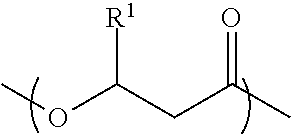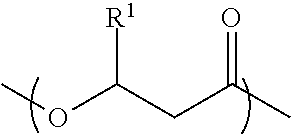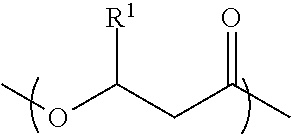Biodegradable container closure and resin therefor
a biodegradable, container technology, applied in the direction of bio-packaging, transportation and packaging, other domestic articles, etc., can solve the problems of not having a recycling stream, affecting the quality of products, so as to minimize environmental problems, optimize the processing conditions of these materials, and maximize productivity and costs
- Summary
- Abstract
- Description
- Claims
- Application Information
AI Technical Summary
Benefits of technology
Problems solved by technology
Method used
Image
Examples
Embodiment Construction
[0023]The present invention answers the need for a biodegradable container having a biodegradable container closure using biodegradable materials that are capable of being easily processed into plastic container closures. The biodegradable materials and container closures made therefrom answer a need for disposable containers having increased biodegradability and / or compostability.
[0024]As used herein, “ASTM” means American Society for Testing and Materials.
[0025]As used herein, “alkyl” means a saturated carbon-containing chain which may be straight or branched; and substituted (mono- or poly-) or unsubstituted.
[0026]As used herein, “alkenyl” means a carbon-containing chain which may be monounsaturated (i.e., one double bond in the chain) or polyunsaturated (i.e., two or more double bonds in the chain); straight or branched; and substituted (mono- or poly-) or unsubstituted.
[0027]As used herein, “PHA” means a poly(hydroxyalkanoate) as described herein having random monomeric repeati...
PUM
| Property | Measurement | Unit |
|---|---|---|
| weight percent | aaaaa | aaaaa |
| weight percent | aaaaa | aaaaa |
| weight percent | aaaaa | aaaaa |
Abstract
Description
Claims
Application Information
 Login to View More
Login to View More - R&D
- Intellectual Property
- Life Sciences
- Materials
- Tech Scout
- Unparalleled Data Quality
- Higher Quality Content
- 60% Fewer Hallucinations
Browse by: Latest US Patents, China's latest patents, Technical Efficacy Thesaurus, Application Domain, Technology Topic, Popular Technical Reports.
© 2025 PatSnap. All rights reserved.Legal|Privacy policy|Modern Slavery Act Transparency Statement|Sitemap|About US| Contact US: help@patsnap.com



